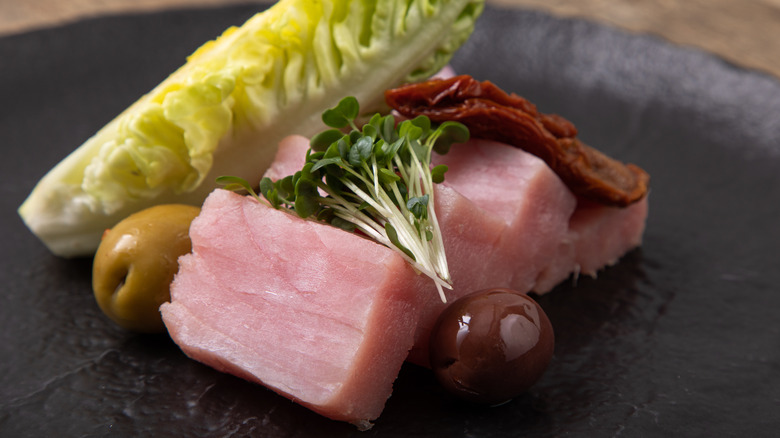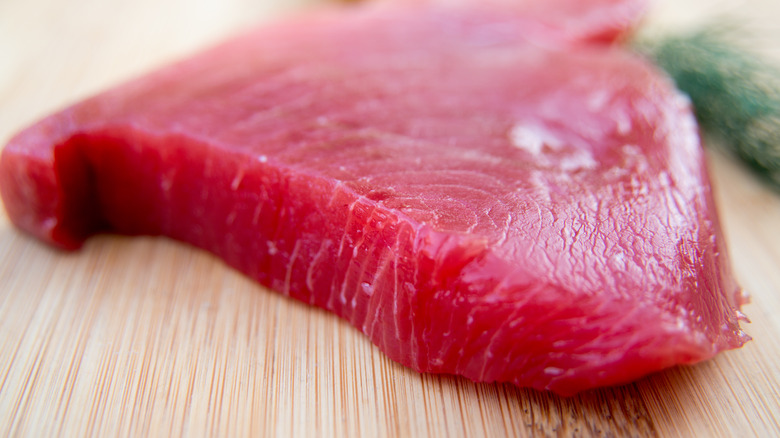The Best Types Of Tuna For Tuna Confit
If you aren't doing this already, it's time to confit your tuna. While you might be familiar with duck confit, the technique can be used for just about any protein or vegetable. A fabulous way to diversify how you prepare tuna, there are a few tips and tricks you need to know before giving filets a bath in fat. Just like all oil isn't created equal, types of tuna can also vary. Ranging in flavor and texture, there are a few types that make for the tastiest confit.
At its core, confit refers to food that's been cooked in its own fat, but it's also often used to denote food that's cooked in any type of fat. Unlike deep frying, Serious Eats explains that confit cooks at lower temperatures (around 200°F), which is slightly higher than the temperature required for poaching. A gentle cooking method, preparing confit is a great option for seafood as the protein tends to be more delicate to handle than a steak or chicken breast.
Along with ensuring that fish stays luscious — and avoiding the risk of stinking up the kitchen — tuna confit can also add another dimension of flavor to the fish. Before adding in the steak, Epicurious recommends simmering aromatics like garlic and herbs to infuse the olive oil for layers of complexity. Keeping things low and slow, the only other key piece of advice is knowing which type of tuna to use.
Aim for ahi
Given that confit is a method that involves a great deal of fat, choosing an overly fatty fish isn't necessarily ideal. In fact, HICAPS Marketing Corporation explains that the confit technique is generally reserved for leaner fish like tilapia, cod, or sole, all of which tend to lack moisture. That said, although the technique can work to accentuate the richness of fatty fish like tuna, choosing varieties with a lower fat content will yield the best results.
Ahi tuna, specifically yellowfin, reigns supreme for confit, according to MasterClass. Boasting a ruby red hue, the dense and lean yellowfin has a delicately sweet flavor that's perfect for bathing in oil. For a more cost-effective alternative, Food52 also suggests using a loin of albacore tuna — just keep in mind that the fish may be a bit fattier, giving it the potential to become greasier.
Once you've cooked the ahi (or albacore), there are several ways to enjoy the tuna. Eat it as is with some crusty bread, or remove it from the oil and serve the steaks or loins over a tomato salad. You can even mirror the French and craft a niçoise salad or Provençale-inspired pan bagnat — whatever you decide, the tender tuna is sure to be a knockout ingredient in any dish.

